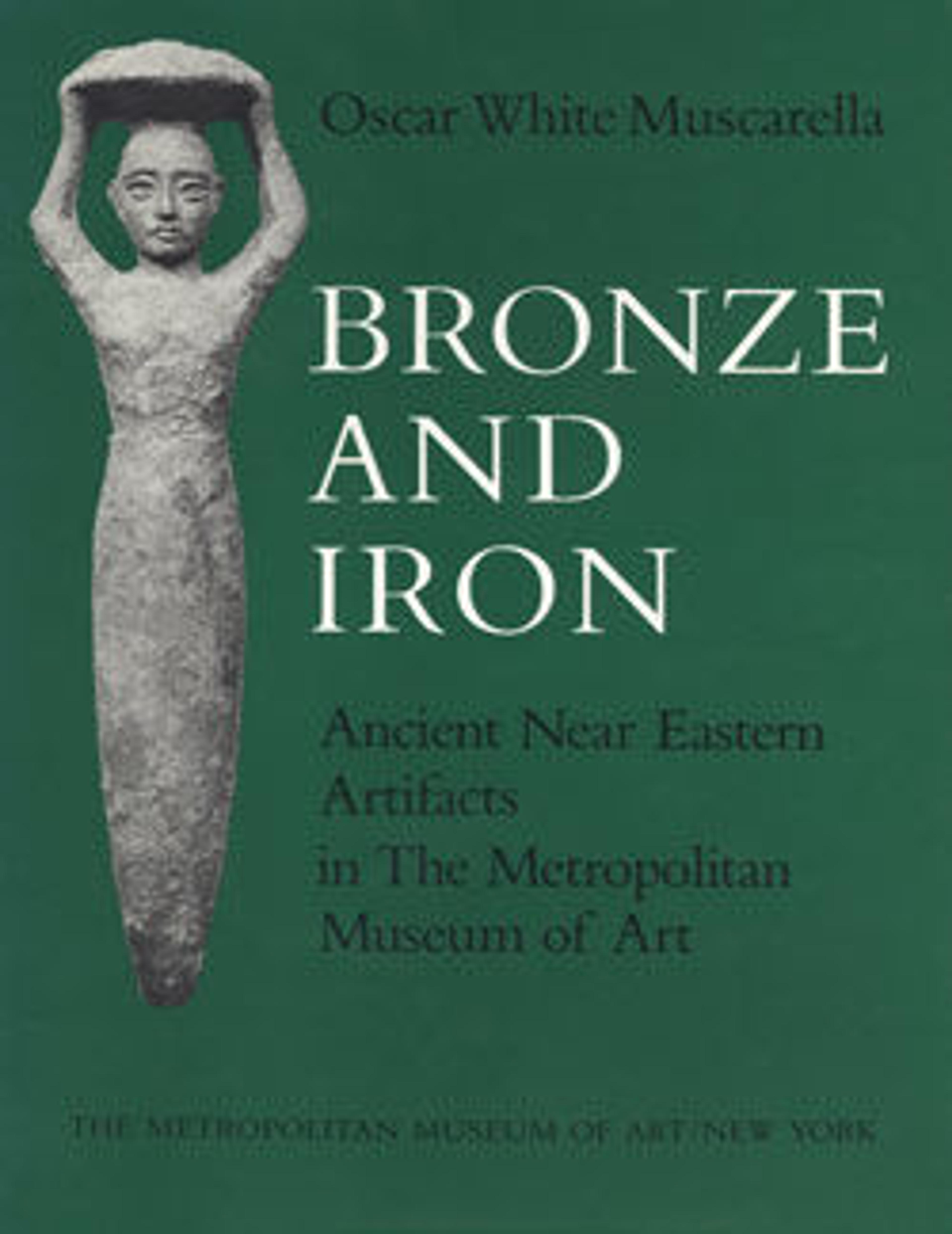Horse bit cheekpiece in form of a horse and rider
Starting around 1930 large quantities of bronze artifacts came on the antiquities market. These artifacts are characterized by a unity of style and type, and have been attributed to Luristan, a mountainous region in western Iran. This is little evidence to support this attribution, but the term ‘Luristan bronze’ is now well-known and widely used as a shorthand for this idiosyncratic corpus of objects.
This cast bronze cheekpiece was originally part of a bridle for a horse, and it has loops affixed to it through which the reins would have passed. It depicts a rider mounted on a horse in the round. The horse’s shoulders and hindquarters are modeled, and its knees and ankles are indicated with raised lumps. All four legs are individually modeled, and a small penis is visible between the hind legs. The hooves are marked with incised lines. The horse’s tail is rendered as a cylindrical tube that connects to the groundline. The mane is a raised ridge along the back of the horse’s neck, which meets the ring on top of its head; a forelock protrudes from the front. Two ears in the shape of cones emerge from the sides of the horse’s head; its eyes are represented as raised dots. Its muzzle is rectangular, and the mouthpiece and sidebars of the bridle are visible. Braided reins run from the bridle to the mane, where they are held by the rider. The horse stands on a narrow groundline with perpendicular crossbars to support its hooves.
The rider, whose gender is not clearly signaled, is small in proportion to the horse. He has a tall head, out of proportion with the rest of his body and seemingly wrapped in a turban. He has a sloping nose and curls of hair protrude from under his turban. His left arm is raised to hold the reins, and his right is at his side with the elbow bent.
The size and elaborateness of this cheekpiece suggest it was not used on a daily basis, and was probably reserved for special occasions, such as parades. It is not clear if this cheekpiece was ever used, but many other examples are. That it shows a mounted rider implies that it was used for the bridle of a riding horse, not a chariot, in which case it provides some of the earliest evidence for riding in Iran.
This cast bronze cheekpiece was originally part of a bridle for a horse, and it has loops affixed to it through which the reins would have passed. It depicts a rider mounted on a horse in the round. The horse’s shoulders and hindquarters are modeled, and its knees and ankles are indicated with raised lumps. All four legs are individually modeled, and a small penis is visible between the hind legs. The hooves are marked with incised lines. The horse’s tail is rendered as a cylindrical tube that connects to the groundline. The mane is a raised ridge along the back of the horse’s neck, which meets the ring on top of its head; a forelock protrudes from the front. Two ears in the shape of cones emerge from the sides of the horse’s head; its eyes are represented as raised dots. Its muzzle is rectangular, and the mouthpiece and sidebars of the bridle are visible. Braided reins run from the bridle to the mane, where they are held by the rider. The horse stands on a narrow groundline with perpendicular crossbars to support its hooves.
The rider, whose gender is not clearly signaled, is small in proportion to the horse. He has a tall head, out of proportion with the rest of his body and seemingly wrapped in a turban. He has a sloping nose and curls of hair protrude from under his turban. His left arm is raised to hold the reins, and his right is at his side with the elbow bent.
The size and elaborateness of this cheekpiece suggest it was not used on a daily basis, and was probably reserved for special occasions, such as parades. It is not clear if this cheekpiece was ever used, but many other examples are. That it shows a mounted rider implies that it was used for the bridle of a riding horse, not a chariot, in which case it provides some of the earliest evidence for riding in Iran.
Artwork Details
- Title:Horse bit cheekpiece in form of a horse and rider
- Period:Iron Age II-III
- Date:ca. 900–750 BCE
- Geography:Iran
- Culture:Iran
- Medium:Bronze
- Dimensions:4.62 x 4.62 in. (11.73 x 11.73 cm)
- Credit Line:Gift of Christos G. Bastis, 1979
- Object Number:1979.352.2
- Curatorial Department: Ancient West Asian Art
More Artwork
Research Resources
The Met provides unparalleled resources for research and welcomes an international community of students and scholars. The Met's Open Access API is where creators and researchers can connect to the The Met collection. Open Access data and public domain images are available for unrestricted commercial and noncommercial use without permission or fee.
To request images under copyright and other restrictions, please use this Image Request form.
Feedback
We continue to research and examine historical and cultural context for objects in The Met collection. If you have comments or questions about this object record, please contact us using the form below. The Museum looks forward to receiving your comments.
